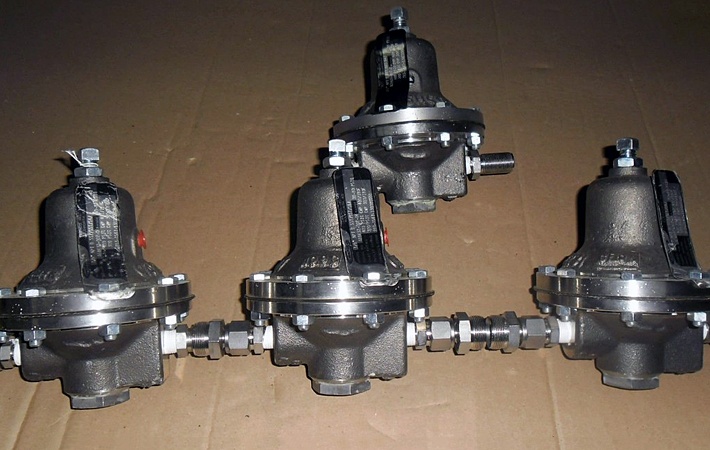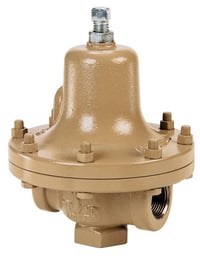
As with most fluid processing equipment, it is very important to properly size and select your parts. Installing equipment of the wrong size or with incompatible materials will only cause problems in your process. Depending on the application, a lot of factors can come into play when selecting a valve or regulator. Let’s talk about what to consider when selecting regulator trim.
 First of all, regulator trim are the special “goodies” inside of the pressure regulator. These are the functional parts of the regulator which are exposed to the line fluid. They change or modify the pattern of flow through the valve to get a specific characteristic, such as a certain flow, low noise, reduced cavitation, etc.
First of all, regulator trim are the special “goodies” inside of the pressure regulator. These are the functional parts of the regulator which are exposed to the line fluid. They change or modify the pattern of flow through the valve to get a specific characteristic, such as a certain flow, low noise, reduced cavitation, etc.
The trim refers to parts such as the stem, closure member, seating surface and other associated components. Keep in mind that some self-contained pressure regulators don’t offer much for trim customization because few options exist besides that specific regulator model selection.
You should already have your regulator picked out before selecting the regulator trim. Once you’re ready to select the trim, you should consider these five criteria:
What are you processing? Is it a liquid, gas, or steam? Different mediums call for different trim specifications. When determining trim, you will need to know the viscosity, weight density and volume. It is also important to know if it is corrosive or erosive.
How much pressure is flowing through your process? How steady does it need to be? Pressure variations or extreme pressures are something to take into consideration when selecting your regulator trim. Regulators are best used in systems where flow changes are small. Not all regulators can handle high levels of pressure so it’s important to choose equipment that will hold up if you have a high pressure process.
What is the temperature of your process? A particularly hot or cold process will require certain trim materials that are able to withstand the extreme temperatures. The design of the regulator itself, along with the valve should be taken into consideration. An experienced engineer will be able to help you select suitable body and trim materials for extreme temperature applications.
Is all of your equipment compatible with each other and the process it’s in? Sometimes equipment and process materials can conflict and cause issues. For example; if you are pumping an extremely hot or corrosive liquid, you might damage the regulator trim if the wrong materials are used. This is obviously something you want to avoid! Be sure to check the compatibility of your equipment with your process before installation.
Selecting the proper trim will save you time and money. Your regulator will be optimized for your process and will play nicely with the other equipment. Instead of fighting the uphill battle that comes with poorly-sized equipment, you will be able to sleep well knowing that your process is in good health. Installing a regulator with the proper trim will minimize downtime and unexpected maintenance.
For help determining which equipment you need, contact us. Our valve experts and engineers will help size your valves and select your regulator trim if you're located in Wisconsin or Upper Michigan.
These Stories on Valves
Headquarters and Service Center
Located outside Green Bay, WI
707 Ford Street
Kimberly, WI 54136
920-733-4425
OptiFlow Design and Build Center
1002 Truman Street
Kimberly, WI 54136
920-733-4425
Burnsville Service Center
12265 Nicollet Avenue
Burnsville, MN 55337
952-444-1949
Grand Rapids Service Center
26489 Industrial Blvd
Cohasset, MN 55721
952-444-1949
© Copyright 2024. Crane Engineering. All Rights Reserved. Privacy Policy.